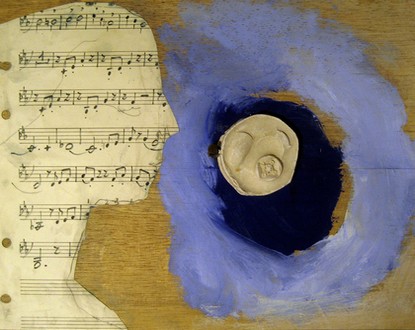William Xerra uses a bit of everything to reassemble faces through cutouts. It would be more accurate to say silhouettes taken in profile. Alone or in pairs, sometimes face to face, other times opposed, these faces speak to us and invite us to identify with them.

The artist William Xerra seems to have opened the drawer of memories of a young girl who became old. Perhaps it was with her that he chose the maps, why Germany, why England? But we are asking the wrong question. There is another choice, another motif in these maps. The young girl, now old, brings out the photo of a young man where she appears by his side.
The artist deconstructs this photo and gives it another aspect, more depth with the silhouettes. We then ask another question: What do these faces think about? Here we have as many answers as there are emotions in a heart and a human soul. The woman, love, travel, music, poetry, beauty, the list is endless, for feelings are eternal. Enigmas of absent faces.
These faces are absent in their characteristics, their features, but they are there, ethereal and silhouetted, perhaps ghosts, but indeed present. In a previous work, William Xerra replaced photos of the deceased with a mirror. Here it is somewhat similar; each of us can identify with the silhouette, and the artist, in a certain way, invites us to dream and escape.
But will we be able to follow him and discard our old garments?
Thierry Jan



